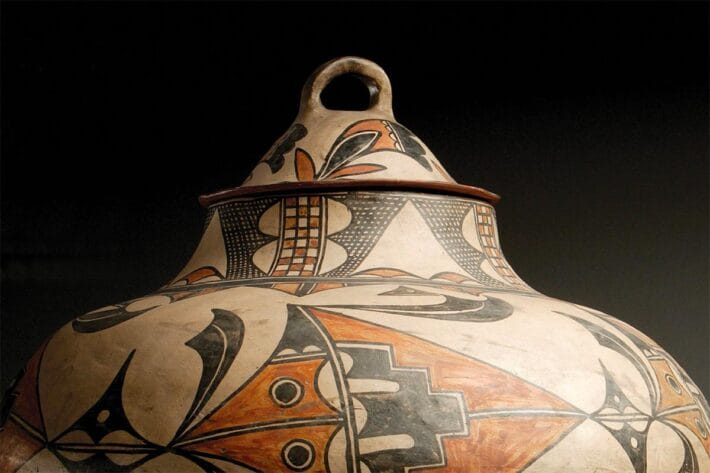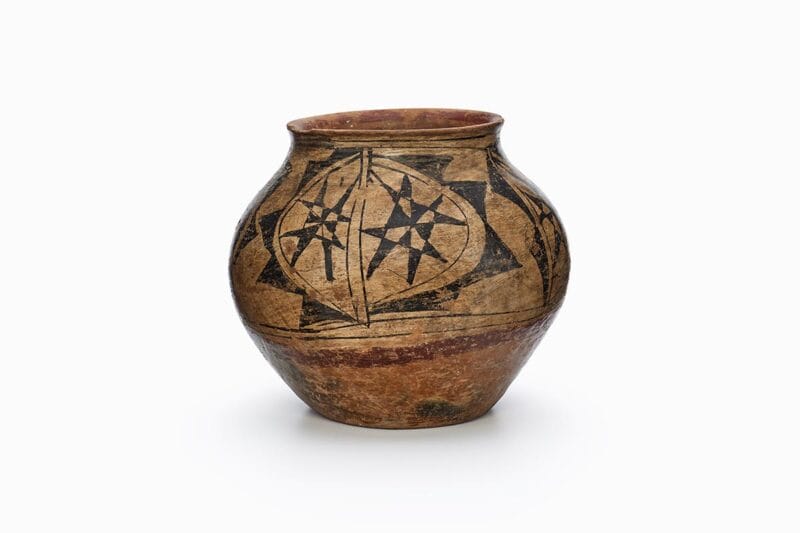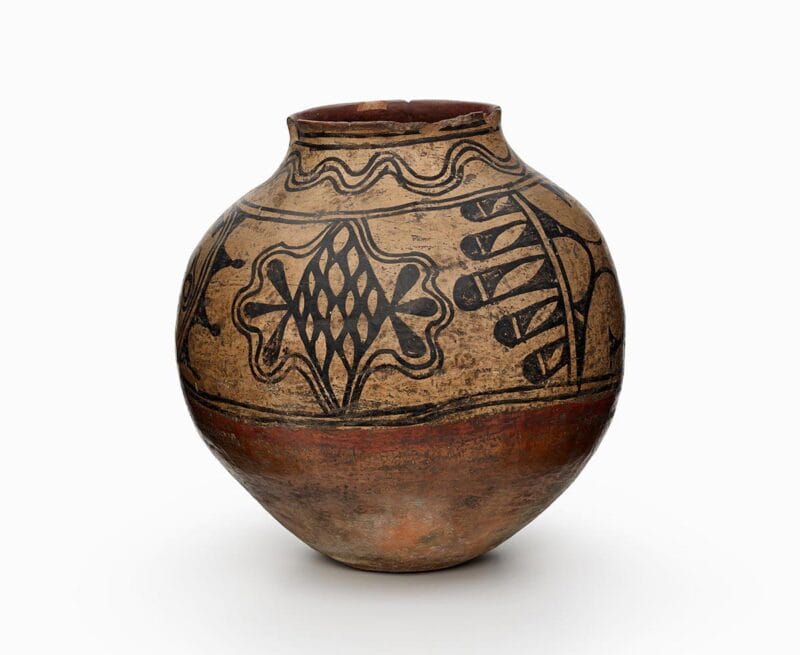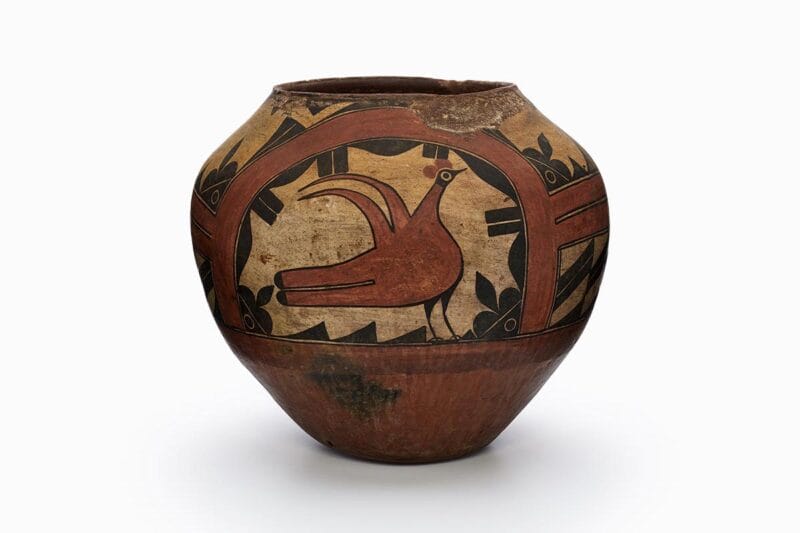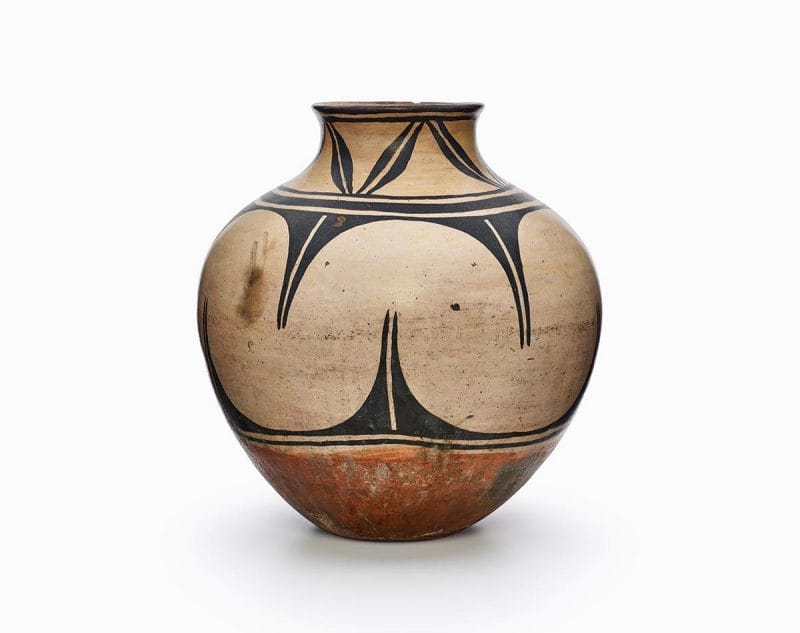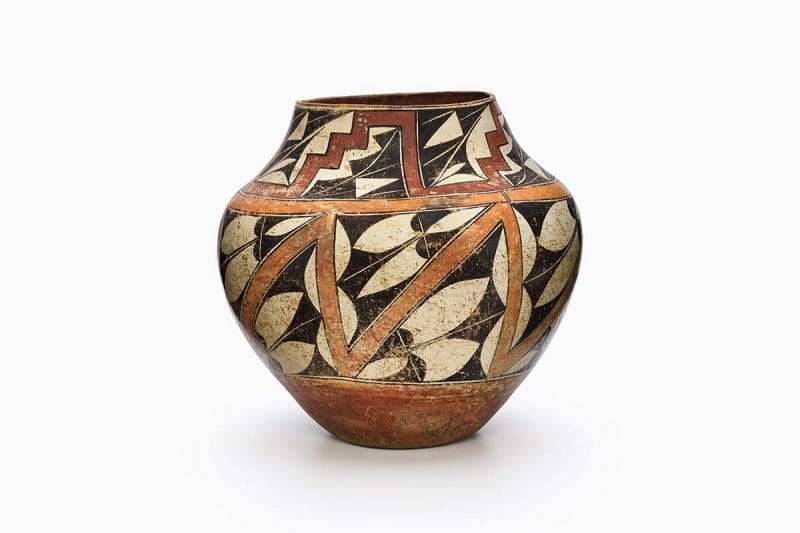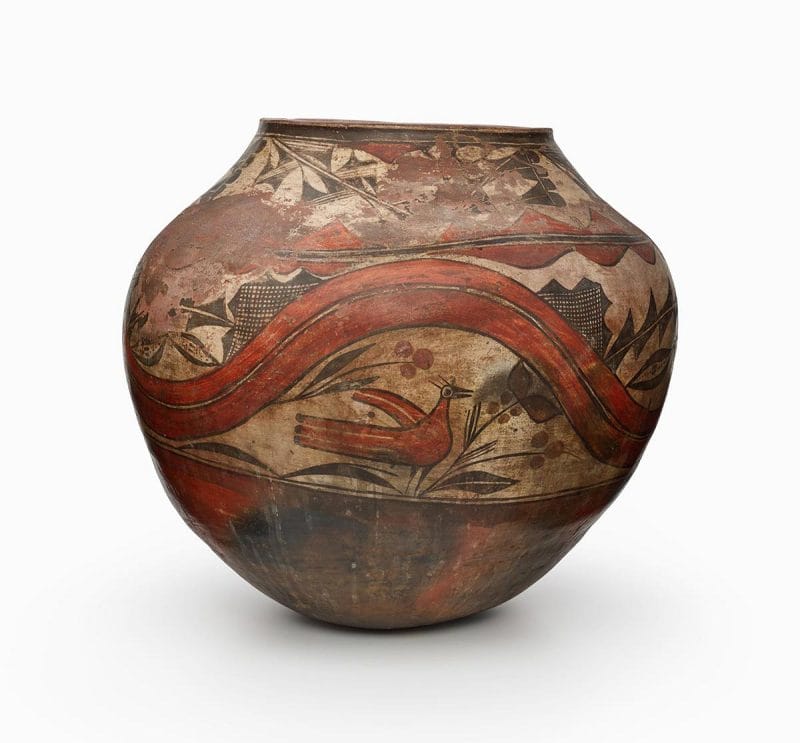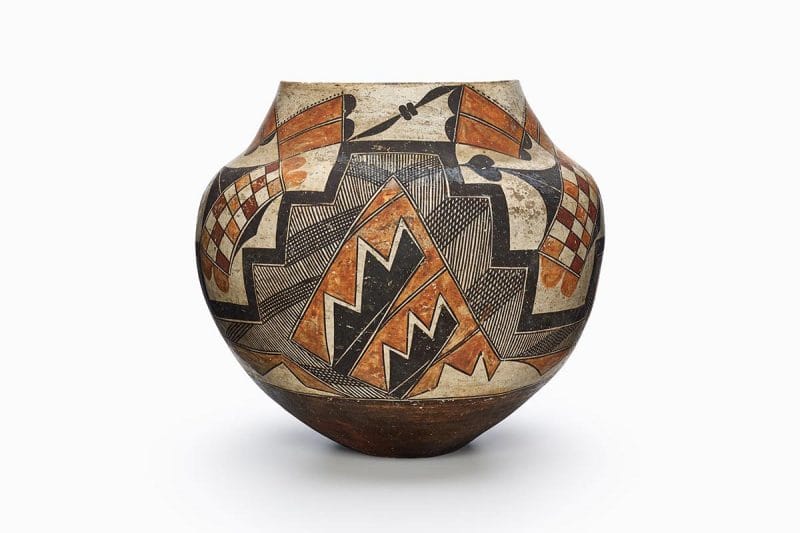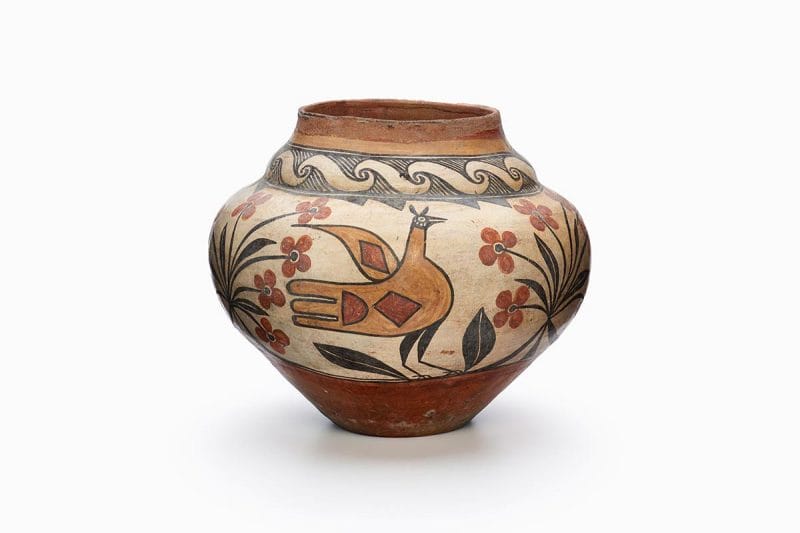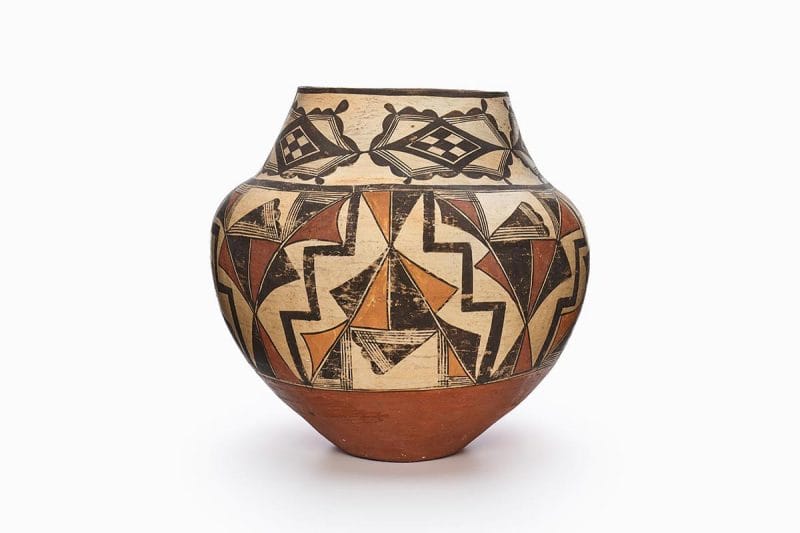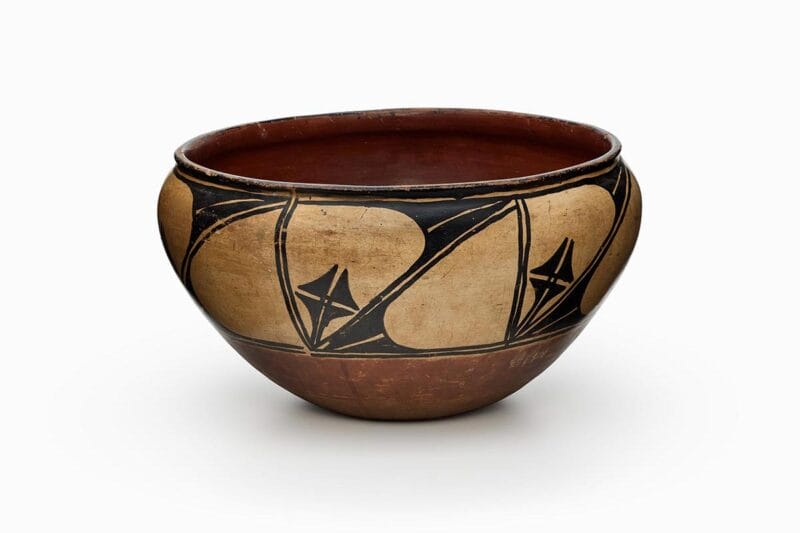
About the Object
An unknown artist created this vessel by layering clay coils on top of one another and then smoothing them with a scraping tool. The work’s motifs and white-on-black glaze reveal what scholars call the Tularosa style. Though the exact significance of the decorations remains uncertain, the motifs likely have multiple meanings: The spirals may represent a serpent, while the triangular forms with lines and dots possibly signify bird feathers. The darker trapezoidal features likely represent rain clouds. These were likely related to agricultural and life cycles.
Additional Information
Originating from nomadic groups such as the Conchise in the mountains of east central Arizona and west central New Mexico, the Mogollon culture eventually projected its influence as far as southern New Mexico, west Texas, and Northern Mexico. Beginning about 700 CE, the Mogollon began to use ceramics in place of baskets for storage, ritual, and trade; at the same time, they started moving into larger settlements. For the Mogollon and related cultures such as the Ancestral Puebloan, life was centered around a mixed agricultural, hunting, and gathering regime that included rabbits, deer, and birds, as well as foods such as maize, juniper berries, walnuts, and fruit from various cacti.
[Throckmorton Fine Art, Santa Fe, NM];
The Jan T. and Marica Vilcek Collection, New York, NY, 1997-2010;
Santa Fe, NM. Museum of Indian Arts and Culture. Grounded in Clay: The Spirit of Pueblo Pottery (July 30, 2022-May 29, 2023); New York, NY. Vilcek Foundation and Metropolitan Museum of Art (July 13, 2023-June 4, 2024); Houston, TX. Museum of Fine Arts, Houston (October 20, 2024-January 12, 2025); St. Louis, MO. Saint Louis Art Museum (March 21-September 14, 2025).
Related Objects
You may also be interested in
“Grounded in Clay” on Display at the Saint Louis Art Museum
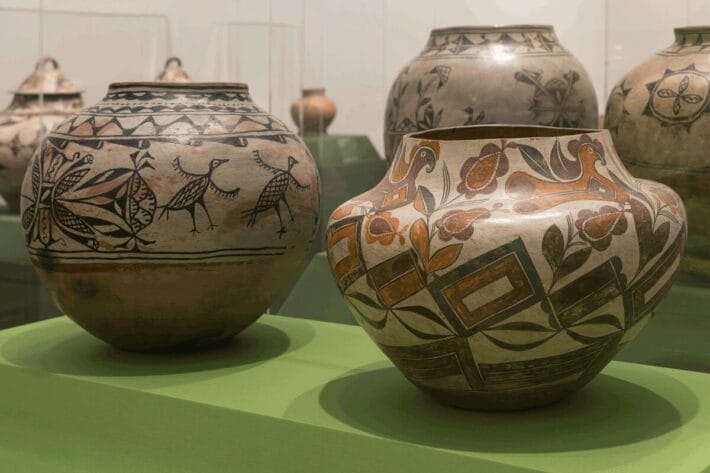
“Marsden Hartley: Adventurer in the Arts” travels to New Mexico
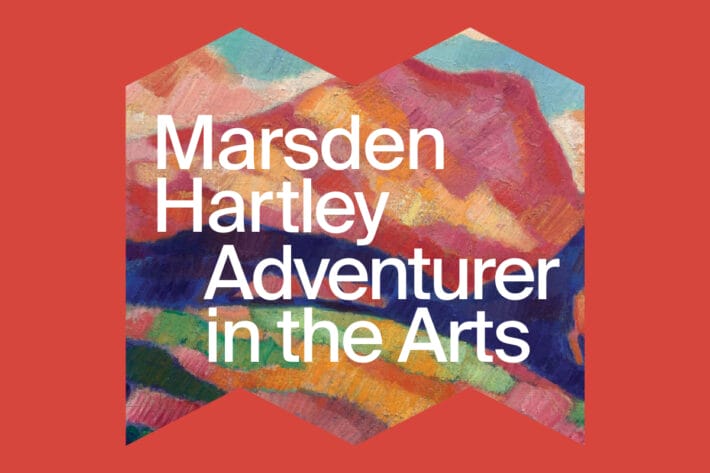
Vilcek Foundation supports “Grounded in Clay: The Spirit of Pueblo Pottery”
